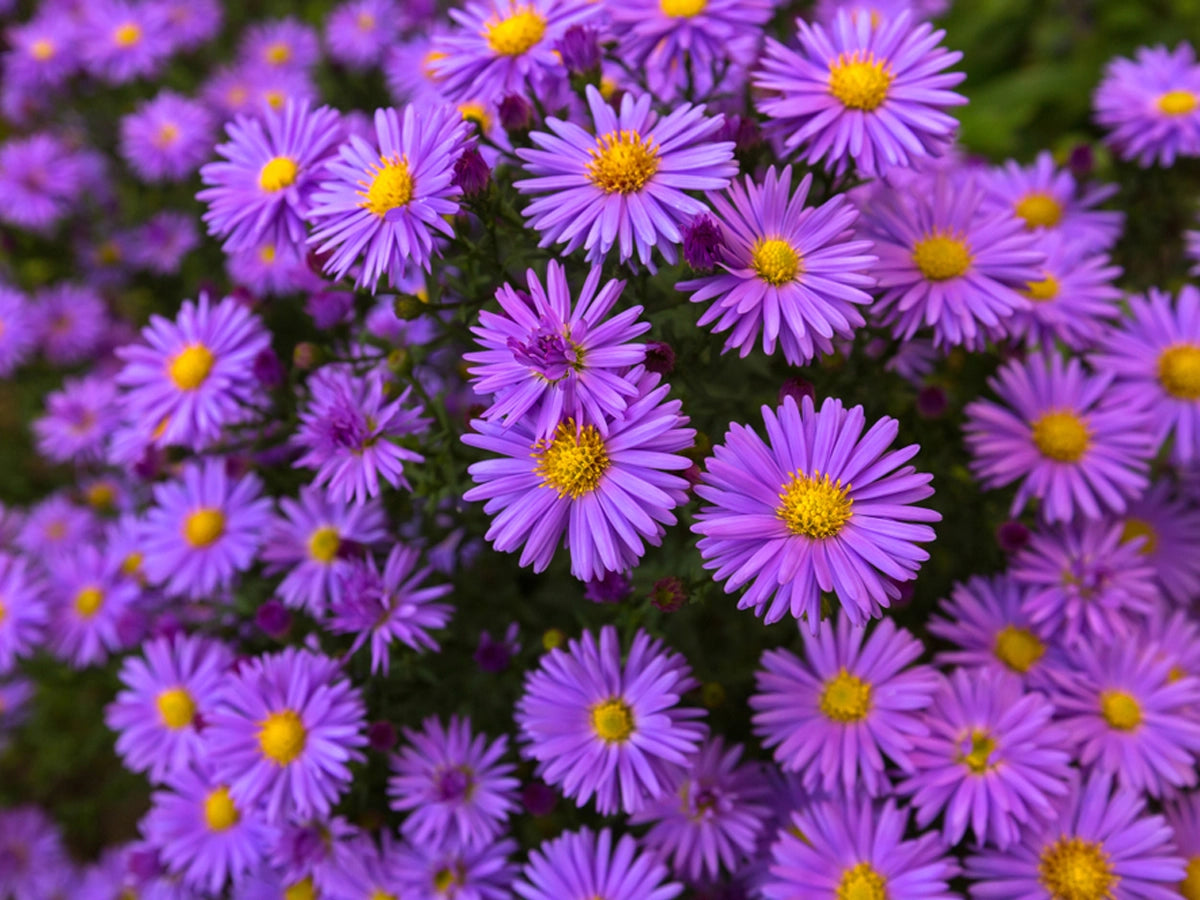How to Grow
Want to grow daisies at home? It's easy with our step-by-step guide and care tips
"Daisies are like sunshine to the ground." – Drew Barrymore
Of course, they are! With a bright yellow center and dazzling white petals all around – can there be anything prettier than daisies? Who would be heartless enough not to fall in love with a daisy flower right at first sight?
This perennial flowering plant comes in a variety of hues, and each of them is equally gorgeous. Apart from being a source of beauty, daisies are also used by women as a hair accessory.
Want to read something more interesting?
Daisies have medicinal uses also. They are believed to have astringent, anti-inflammatory, and antispasmodic properties. They also help heal wounds faster.
This blog is all about letting you know how to plant daisies in your home. We will discuss the following: -
- Interesting facts about daisies
- How to grow daisies at home
- How to take care of daisy flowering plant
- Benefits of daisy flowers
So, let's get started.
Interesting facts about daisies
- The scientific name of the daisy is Bellis perennis. It is also known as the English daisy, common daisy, and lawn daisy.
- The word "Bellis" comes from the Latin word Bellus, meaning "pretty," while "perennis" is Latin for "everlasting."
- It belongs to the European species of the family Asteraceae, which includes aster and sunflower too.
- The word Daisy is believed to have been picked up from Old English "daes eage," meaning "day's eye." The name alludes to how their petals close in the evening and reopen in the morning to signify the start of a new day.
- There are varieties of daisies available worldwide, and they make up almost 10% of all flowering plants in the world.
- In every part of the world, excluding Antarctica, daisies can be found
- It might astound you that one daisy flower is actually a composite of two flowers – a yellow disk flower and the white florets surrounding it.
How to grow daisies at home
Daisy is one of the most beautiful flowers that can cheer you up instantly. It is one of the low-maintenance flowering plants that will readily spruce up your outdoor garden or indoors. Learn how to grow them with the following instructions: -
For outdoor gardening
Seed preparation
- Either buy seed starting mix or make your own by combining equal parts of perlite, peat moss, and vermiculite. Fill a tray with this mix and use a spray bottle to mist the mix.
- Get the seeds of daisies and, using a pencil tip, poke the mix into a tray to make a hole. The hole can be 6.4mm deep, where you must place the seed. Remember to keep the pointed face down. Now cover the seed with the mix.
- Use a spray bottle to mist the seeds so that the seed starter mix remains moist.
Germination
- Take a plastic sheet, cover the tray, or use a glass seed starter dome. Covering the seeds will create a warm and safe environment for germinating. Keep the seeds this way for 2-3 weeks. After that, you will notice sprouts. When the plastic is on the tray, you won't need to water it as frequently, but once it's off, you might need to water it daily to keep the medium moist.
- Also, you have to provide enough sunshine for the seeds. So, choose a sunny windowsill or any other safe area that receives at least 8 hours of indirect yet bright light daily. This warmth will help with faster germination.
Transplanting
- After the seed germination, the daisies will continue to grow, and once you see at least two sets of leaves appear on the young seedling, you can transplant it in a bigger pot or outdoors. But if the winter is harsh in your place, wait for the season to be over to transplant outside.
- While transplanting outside in your garden, you should choose a spot that enjoys both morning and afternoon shade. This plant cannot exist in the sweltering midday sun or at temperatures above 21 degrees Celsius. That’s why daisies are mostly found indoors in warmer climates.
- To plant the daisies in your garden now, you must first amend the soil. Check the drainage of your garden soil and make necessary amends to it. To improve drainage, you can till the soil for 2 inches of compost before planting. You may also use peat. You may add sand to improve drainage if your soil has more clay.
- Using a spade or your hands, dig holes wide enough for the root ball of the young daisy seedlings. The holes should have space of 12 to 18 inches in between so that there is necessary airflow. Also, don’t dig the holes too deep; otherwise, the crowns will rot.
- Gently and carefully remove the seedlings from the seed tray and place them in the holes. Use the prepared soil to cover the root ball. Tap the ground with your hands.
Basic care for blooming
- Now water the seedlings once a week to keep the soil moist but not soggy.
- You may add an all-purpose liquid fertilizer to your daisy plant for gorgeous flowers during spring, early fall, and summer.
- To encourage new flowers, remove the dead flowers and leaves.
Continue nurturing this plant, and it will bloom in 100-130 days.
For indoor gardening
- Mix an equal amount of perlite, peat moss, and vermiculite in a seed tray and spray this mix to keep it moist.
- Place daisy seeds making holes in this tray
- Mist the seeds to keep them moist
- Cover the tray with a plastic sheet or glass dome to allow faster germination. Meanwhile, check if the seeds need water every once in a while.
- Keep the seeds in this manner for 2 to 3 weeks under the sun. A windowsill that receives at least 8 hours of sunlight will be best for its growth.
- When you see at least two sets of leaves, i.e., four leaves on the young seedling, you can transplant it into a larger pot.
- Now choose a pot with suitable drainage holes and fill it up with a potting mix (which has peat, perlite, or vermiculite). Water the soil with water using a mister.
- Allow the soil to dry before watering because daisies like moist but not soggy soil conditions. In the winter season, it will require less water as compared to the summer.
- Place the pot under bright sunlight for at least 8 hours, and then, if the afternoon sun gets harsh, offer some shade.
- Every 30 days, dissolve a 15-5-15 NPK fertilizer in the water before watering the plant to feed the daisies. In the summer, spring, and fall, it will need additional all-purpose liquid fertilizer for better blooms.
- Get rid of dead and dried leaves and flowers to promote the growth of new ones.
- Continue this care routine. It will take at least 100-130 days from the date of planting for this plant to bloom.
How to take care of daisy flowering plant
Daisies are easy to grow in both an indoor and outdoor garden. All you have to do is maintain the following instructions that will keep the plant safe and healthy: -
Sunlight
English daisies or common daisies thrive in full, bright sunlight. It enjoys partial shade too. But make sure it receives at least six to eight hours of sunlight daily. If you live in a hotter region where the afternoon sun is scorching, provide some shade or transfer the pot indoors for a few hours.
Location
The ideal location for a daisy plant is where there is full, bright sunlight for at least 6 hours. So, choose your sunny balcony, terrace, or outdoor garden. You may also place it near the east window.
Water
Common daisies or English daisies are not drought-tolerant plants, so you have to apply water regularly. Also, allow the soil to dry before watering. A cool, moist soil is what works best for daisies, but not a soggy one. So, apply one to two inches of water every week for the summer season and every alternate week for spring and winter.
Fertilizer
Generally, daisies do not require fertilizers because the soil nutrients are enough for their growth. But if your soil is rocky or poor, you can apply an all-purpose slow release flower fertilizer in early spring. You can apply organic compost or manure to the soil – that is always welcome. In that case, you have to prepare the soil before planting the daisy seeds. Soften the soil, mix organic fertilizer, and then sow the seeds.
Mulching
Once the seedlings grow to 5 cm in height, you can mulch the soil with wood chips, bark, or pine needles. This will help the soil retain moisture, and over time, they will release nutrients into the soil.
Soil
The best soil for growing daisies is loamy, rich in organic matter, and well-drained. The same types of soil that produce healthy veggies and roses are preferred by these plants. English daisies can grow on soil that is neutral, acidic, or alkaline.
Pruning
Daisies don't generally need to be pruned due of their small size and fragile structure. However, by cutting off the spent flower stems, you can keep your lawn, balcony, terrace, or outdoor garden clean. Due to their prolific self-seeding, you might also need to incorporate the removal of undesirable blossoms from places where you don't want them to grow. Keep in mind to pull these plants out by the roots; otherwise, they will come back.
Benefits of daisy flowers
Daisies are used in the food and medicine industries. Ayurveda mentions daisies as a magical plant that has astringent and anti-inflammatory properties. Take note of some of the benefits of daisies below: -
Good for appetite
Common daisies can readily boost hunger and cause hyperphagia because they are appetizers. It operates on hormones like ghrelin, stimulating the digestive process and promoting healthy digestion. Being an appetizer, it can thus bring back a taste for someone who has lost appetite. But seek a doctor consultation before trying on your own.
Comforts women during menstruation
The antispasmodic properties of common daisies help reduce menstrual pain and ease the menstrual blood flow. The plant can also strengthen the uterine muscles by acting as a tonic for the muscles.
Heals wound
Due to their potent healing abilities, common daisies are excellent wound healers. This herb aids in effective wound healing by removing dead skin tissues. To help heal wounds and promote healing, they replace and repair damaged skin cells and other tissues.
Reduces respiratory tract inflammation
The common daisy is famous for its anti-inflammatory properties. This trait helps block the enzymes that may cause upper respiratory tract inflammation. That's how they help relieve the discomfort and pain one may be experiencing.
Astringent action
Due to their astringent properties, common daisies have a cooling impact on the skin that repairs the bonds and tightens the skin. Common daisies' ability to compress the mucous membrane and minimize internal mucous secretions and blood serum discharge is also a result of this characteristic.
Consumed for vitamins
The leaves of common daisies can be eaten in a salad. The petals can be used in sandwiches, salads, and soups. An herbal tea is also made from the petals of daisies, which are believed to be full of vitamins.
Besides these benefits mentioned above, common daisies are also believed to be a good remedy for sore throat, mouth sores, gall bladder-related problems, urinary tract inflammation, rheumatic pain, cystitis, etc.
Bring daisies home if you want a dash of pure beauty amidst your furniture and other household objects. Once it blooms, cut the flowers and decorate your space – it is therapeutic! Maintaining this plant is relatively easy; therefore, you can allot some space on your balcony or windowsill for a daisy plant.
FAQs related to Daisies
Can daisies be grown in India?
Yes, daisies can be grown in India. Some varieties of daisies are found in hilly regions, but gerbera daisies can be found throughout the country.
Can I grow daisies indoors in the Indian climate?
In the Indian climate, gerbera daisies grow the best. You can grow gerbera daisies indoors without much challenge.
For how long would daisies remain fresh in vases?
If you keep the vase water clean from bacteria and change it every couple of days, daisies will remain fresh for 7 to 14 days.
In which season do daisies bloom?
Daisies bloom all through the summer, so you have to sow them in early winter or spring.
How long it takes daisies to bloom?
It may take around 100-130 days for daisies to bloom.
Which is the most common daisy?
English daisies, or common daisies, are the most commonly available. The yellow center and white petals surrounding it are hard not to recognize.



